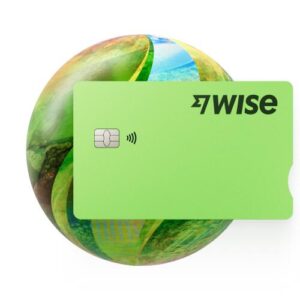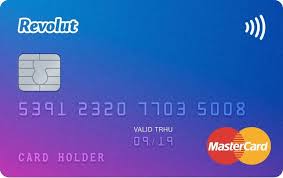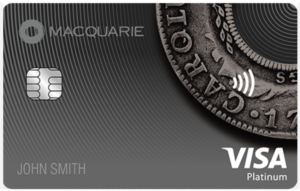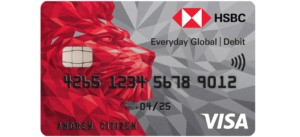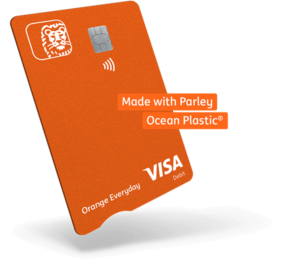5 Best Debit Cards for Australians Travelling Overseas - 2026
If you’re a cost-conscious Australian traveler looking to make the most of your money when you travel, you’re likely to be wondering: what is the best debit card to use overseas? Using a card with high foreign transaction fees or a bad exchange rate might mean you’ve got less to spend during your precious vacation days - but with some smart choices you can limit the costs of currency conversion, while still spending securely and conveniently while you’re on the move.
This guide has you covered with a detailed introduction to 5 great debit cards for overseas spending including a look at features, fees and who they’re best for.
Quick summary: Best international debit cards
Here is a list of the 5 best travel cards you can take with you on your next trip abroad. In this guide we’ll explore the positives and negatives for each one in our comprehensive comparison and fee analysis:
- Wise - our pick for travel debit cards
- Revolut - low fees
- HSBC - good for cashback
- Macquarie Platinum - no bank withdrawal fees
- ING Orange Everyday - cash back option
In this guide we have reviewed cards based on their availability, fees, convenience and safety, looking at popular providers in Australia.
Best debit cards for international travel: Fee comparison
Reducing or avoiding additional costs when you travel is a must - and getting the right debit card for your trip can help. Here’s a comparison of the cards we look at in this review, covering important fees you’ll need to know about:
| Card name | Maintenance fee | Foreign Transaction Fee | ATM Withdrawal Fee | Exchange Rate |
|---|---|---|---|---|
| Wise card | No fee | No fee to spend a currency you hold enough money in | 2 withdrawals up to 350 AUD a month with no Wise fee - then 1.5 AUD + 1.75% | Mid-market rate |
| Revolut card | $0 - $28.99/month | No fee - there are some limits depending on the plan | Withdrawals to plan limit with no Revolut fee - then 2% | Revolut rate on weekdays to plan limit
Fair usage and out of hours fees may apply |
| Macquarie card | No fee | No fee | No Macquarie fee - ATM operator may charge a fee | Network rate |
| HSBC Everyday Global card | No fee | No fee | No HSBC fee - ATM operator may charge a fee | HSBC rate or network rate |
| ING Orange Everyday card | No fee | No fee | No ING fee - ATM operator may charge a fee
(from 15 October 2025*) |
Network rate (from 15 October 2025*) |
Details correct at time of research - 10th September 2025. Details taken from provider websites and fee schedules.
* ING fee waivers may be subject to meeting eligibility criteria until 15 October 2025
Which travel debit card is right for you will depend on how you spend and what features and services are most valuable for you. To help you decide we’ve selected different card types which you can compare - with an in depth review of each coming up in a moment.
Wise - our pick for travel debit card for international travel
- Multi-currency account which uses the mid-market exchange rate with transparent fees
- Digital card for added security when you shop online
- No minimum balance requirements
- Allows you to make payments and withdrawals in over 150 countries
- The account offers local account details in 8+ currencies, including AUD, GBP, USD, EUR and NZD
Wise is our pick for travel card thanks to its transparent fees, mid-market exchange rates and broad support.
Find out more about the Wise card.
Alex chose the Wise debit card to travel overseas
Here’s what one Wise customer says about using the Wise card for travel spending:
“The only way to travel knowing my Wise card is on my phone, the most reliably efficient money card I’ve ever used. My first travel tip to anyone is get yourself a Wise card.”
*Customer name changed for privacy. The customer was not paid to share a review. Review taken from the Trustpilot website on September 2025

Wise card fees
| Maintenance fee | Foreign Transaction Fee | ATM Withdrawal Fee | Exchange Rate |
|---|---|---|---|
| No fee | No fee to spend a currency you hold enough money in | 2 withdrawals up to 350 AUD a month with no Wise fee, then 1.5 AUD + 1.75% | Mid-market rate, with no markups or added fees for transparency |
Details correct at time of research - 10th September 2025
Pros and cons of Wise card and account
| Wise pros | Wise cons |
|---|---|
| ✔️ It's very easy to set up and order
✔️ Pay with your Wise card in most places overseas where debit cards are accepted ✔️ Currency conversion using the mid-market exchange rate ✔️ Transparent fee structure ✔️ You can transfer money to a bank account overseas ✔️ You can receive foreign currency into a multi-currency account linked to the card |
✖️ There is a 1.75% + 1.5 AUD ATM withdrawal fee when you withdraw over $350 during a month
✖️ ATM operator fees may apply ✖️ It takes 7-14 days for delivery |
Go to Wise or read our review.
Revolut - low fees
- Choose from different account plans with their own features and fees - this review focuses on the Standard plan
- Hold and receive a selection of foreign currencies
- Some weekday exchange with the Revolut exchange rate available on all accounts - fair usage or out of hours fees may apply
Revolut card fees
| Maintenance fee | Foreign Transaction Fee | ATM Withdrawal Fee | Exchange Rate |
|---|---|---|---|
| No fee | No fee - there are some limits depending on the plan | Standard plan: 5 withdrawals up to 350 AUD a month with no Revolut fee - then 2% | Revolut rate on weekdays to plan limit 0.5% fair usage fee when exchanging above plan limit on Standard plan 1% out of hours fees applies to Standard accounts when converting on a weekend |
Details correct at time of research - 10th September 2025
Pros and cons of Revolut card and account
| Revolut pros | Revolut cons |
|---|---|
| ✔️ Choose from different account plans with their own features and fees, which all come with a linked card
✔️ Some weekday exchange with the Revolut exchange rate available on all accounts ✔️ Multi-currency account which supports 25+ currencies for holding and exchange |
✖️ Fair usage or out of hours conversion fees may apply on some account types
✖️ The top tier accounts cost from $5.99 - $28.99 a month ✖️ 2% ATM withdrawal fee when you withdraw above your plan limit during a month ✖️ ATM operator fees may apply |
Click here to see the full list of cards and how Revolut compares
Macquarie Platinum Transaction Account
- Day to day transaction account, which comes with a linked debit card
- No annual fee and no foreign transaction fee to pay when spending
- Macquarie doesn’t charge ATM fees, and will rebate fees charged by ATM operators in Australia
- Available to Australian residents - business accounts are not available
Macquarie card fees
| Maintenance fee | Foreign Transaction Fee | ATM Withdrawal Fee | Exchange Rate |
|---|---|---|---|
| No fee | No fee | No Macquarie fee - ATM operator may charge a fee which Macquarie will not refund | Network rate - set by the card issuer |
Details correct at time of research - 10th September 2025
Pros and cons of the Macquarie card and account
| Macquarie pros | Macquarie cons |
|---|---|
| ✔️ Spend globally with your debit card, with no foreign transaction fee
✔️ Make withdrawals internationally with no Macquarie fee to pay ✔️ Earn variable interest rates based on your account balance ✔️ Send payments to others locally directly from your account
|
✖️ International ATM fees may be applied by the ATM operator
✖️ If you want to send money overseas you’ll need to register with a third party provider ✖️ Interest rates are variable and get lower for higher balance amounts ✖️ No foreign currency holding or exchange option |
The HSBC Everyday Global Debit Card - good for cash back
- Earn up to $50/month cash back on eligible tap and pay purchases - eligibility rules apply. Deposit $2,000 monthly to unlock this benefit on purchases worth under $100 only
- No monthly fees and no HSBC transaction fees
- Easy to use everyday account for a range of foreign currencies
- No foreign transaction fees applied
HSBC Everyday Global card fees
| Maintenance fee | Foreign Transaction Fee | ATM Withdrawal Fee | Exchange Rate |
|---|---|---|---|
| No fee | No fee | No HSBC fee - ATM operator may charge a fee | HSBC rate or network rate |
Details correct at time of research - 10th September 2025
Pros and cons of the HSBC Everyday Global
| HSBC Everyday Global pros | HSBC Everyday Global cons |
|---|---|
| ✔️ Buy, hold and spend in 10 currencies
✔️ Earn up to $50/month cash back ✔️ Make ATM withdrawals overseas with no HSBC charges ✔️ Spend on the go using Visa payWave, Google Pay and Apple Pay ✔️ Exchange between currencies in your account instantly with the HSBC banking app |
✖️ Currency exchange may incur a fee in the form of a marked up exchange rate
✖️ You’ll have to deposit 2,000 AUD/month to the account to get cash back ✖️ ATM operator fees may apply
|
ING Orange Everyday - earn interest
- Everyday transaction account with linked Visa debit card
- No annual fee and no maintenance fee
- Earn interest on your account balance
- Available to Australian tax residents, with a valid Australian phone number and email
ING Orange card fees
| Maintenance fee | Foreign Transaction Fee | ATM Withdrawal Fee | Exchange Rate |
|---|---|---|---|
| No fee | No fee | No ING fee - ATM operator may charge a fee
(from 15 October 2025*) |
Network rate (from 15 October 2025*) |
Details correct at time of research - 10th September 2025
Pros and cons of the ING Orange account and card
| ING Orange pros* | ING Orange cons |
|---|---|
| ✔️ Spend with no foreign transaction fee
✔️ No ING ATM fees ✔️ Get 1% cash back, to an annual maximum of 100 AUD on your utility spending ✔️ Earn interest on your account balance
|
✖️ No multi-currency holding or exchange options
✖️ ATM operator fees may apply |
*ING accounts had eligibility criteria in place to earn certain fee waivers and benefits until 15 October 2025
Citibank Saver Plus - not available anymore
Citibank was sold to National Australia Bank (NAB), and all the accounts were closed and moved to a similar NAB account.
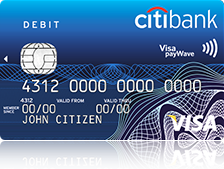
What are Travel Debit Cards?
As Australians, we love to travel. Almost 10 million of us took to the skies last year, mostly to our neighbours in New Zealand and Indonesia, but also further away to the US and Europe.
While we travel, we also need safe access to cash. It's not the most glamorous part of our travel plans, but it's equally important to decide on the best travel money option for us, so we're not left worried at any stage of our trip.

Travel debit cards are a good alternative to carrying cash. They also offer the convenience of a credit card, but work differently.
When you use your debit card overseas, you're drawing money directly from your bank account when you make a purchase. It's designed for everyday money transactions and means you're not accumulating debt.
Debit cards are a great option if you've saved money specially for your trip and if you want to budget your overseas spending. Some debit card providers offer virtual cards, which allow you to spend on your phone while you travel and stay protected from fraud.
We also suggest bringing a back-up debit card and a separate credit card for peace of mind and greater flexibility on your trip.
Pros and cons of travel debit cards
For many people, holding a specific travel debit card alongside one or more regular credit or debit cards can make spending on holiday easier and cheaper. With multi-currency accounts you’ll be able to top up in dollars and switch to the currency you need online or via an app. That gives you total control of your budget and lets you see exactly how much you have available for spending at any one time.
Should you use a debit card for overseas travel?
Spending with a card when you travel overseas can be a very convenient option. It also means you don’t need to carry a lot of cash with you - which can be safer too.
Choosing a debit card over a credit card might mean you pay fewer fees when you’re overseas, as you’ll avoid cash advance charges and interest costs. However, you may find your debit card has its own charges which you’ll need to know about before you get started. Look out in particular for foreign transaction fees which are often around 3%, and are added every time you make a purchase or withdrawal in a foreign currency.
Which is the best debit card for overseas travel?
There’s no single best travel debit card. However, there are a few important things to look out for when you’re picking the right debit card for your trip.
Firstly, it’s worth picking a card on a popular global payment network like Visa or Mastercard. These networks are accepted in most countries around the world, so it’s likely you’ll be able to use them wherever you’re headed.
Secondly, check your card’s foreign transaction fees. This charge is often a percentage added to every dollar you spend or withdraw in a foreign currency. It may not look like a large amount - often around 3% or so - but it can quickly mount up when you’re away from home.
And finally, one last check - take a look at the fees your bank will charge you for overseas ATM withdrawals. Some accounts from providers like Wise and Revolut have low or no fees for overseas withdrawals - but others can crank up the costs so using your card abroad is far more expensive than using it at home.
A great place to start your research into the best card for your travel needs is the comparison table above. We’ve selected travel cards which might suit Australian customers, with a focus on flexible, low cost spending, transparent fees, and a great range of features depending on whether you want a multi-currency account, cash back opportunities or other perks.
Writer’s tip - What's important when choosing a travel card?
When you pick your perfect travel card, look out for cards issued on a global network like Visa or Mastercard, which are compatible with your favourite wallet like Apple Pay, so you can transact conveniently wherever you are.
You’ll also want to look at the fees and exchange rates available. In particular look for a card which uses the mid-market rate or as close as possible, for currency conversion. You’ll also want to look at ATM costs for those times when getting cash is the only option. Finally, choosing a card with no ongoing fees and no inactivity fee can help cut the costs if you don’t transact often.
Which international debit card has no fees?
Some providers offer travel debit cards with no foreign transaction fees, although it’s often impossible to completely avoid extra costs when you’re spending in foreign currencies. To get the best available deal you might want to pick a card with no foreign transaction fee such as the Wise card *and the Revolut card*.
*No fee to spend a currency you hold enough money in.
Providers like Wise and Revolut, which offer multi-currency account options, can also be handy as you’ll be able to switch your dollars to the currency you need before you travel if you’d like to, so you can see exactly what your budget is in the local currency wherever you’re headed. Then just link the travel debit card they provide and spend as normal with it, with no foreign transaction fee to worry about.
What is the difference between travel debit cards and credit cards?
Travel debit cards and credit cards work in different ways - which might make them better suited to specific customer needs. With a credit card you can spread the costs of your spending over a few months - but you’ll need to pay interest if you choose to do this, pushing up the cost overall. Credit cards optimised for travel may also offer rewards, cash back or benefits such as free airport lounge access, but there may be an annual fee to pay to get these perks.
With a travel debit card you’ll need to have the funds in your account already before you head off - but in return, the overall costs may be a little lower. Travel debit cards from specialist services like Wise and Revolut are also handy as they are attached to multi-currency holding accounts you can use to keep your funds in a foreign currency conveniently. That can ultimately mean you save money, and can access better exchange rates compared to using your normal bank.
|
Debit cards for international travel |
Credit Cards for international travel |
|---|---|
|
|
FAQ on best debit cards for overseas travel
What is a travel debit card?
A travel debit card is intended to make travel spending more convenient and often cheaper. You’ll be able to add funds to your account in AUD and switch to different currencies supported by your travel debit card, to spend when you travel more easily.
How to choose a debit card for overseas travel?
Before you decide which travel debit card suits you, think about how you’ll use the card, and compare the features and fees on offer from different providers. Picking a card with no ongoing fees and no minimum balance will be important if you don’t expect to travel so frequently. However, upgrading to a card which comes with a monthly fee might be worthwhile if the fees unlock features you value. Take your time to decide - the perfect travel debit card for you is out there somewhere.
Which debit card is best for travel?
The right travel debit card for you depends on your specific needs and preferences. Some cards offer a really broad range of currencies with easy, low fee conversion. Others have travel friendly perks like free insurance or cash back. By considering the types of transactions you’ll make, and comparing a few options like those picked out above, you’ll be able to find the best travel debit card for your needs.
How do I make my debit card international?
Debit cards issued on major payment networks like Visa and Mastercard are accepted internationally. Your own bank might require you to inform them of your travel plans, so that payments made overseas don’t flag as suspicious on their anti-fraud monitoring. Double check with your card issuer to see if there’s any need to notify them of your travel plans - and don’t forget to also look out for the foreign transaction fees applied to overseas spending, to check you’re not charged more to use your card overseas. If you are, you may be better off with a specialist card from a provider like Wise or Revolut.
What is the best way to pay when travelling abroad?
Carrying cash when you travel isn’t always convenient - and it can also be risky. For many people, paying for their travel with a small amount of cash, backed up with a good travel debit card and one or two additional credit or debit cards can work well. Use your cards to make payments and withdrawals whenever you need to, with the knowledge you can instantly cancel or freeze the card if you’re ever concerned about their security.
How do exchange rates affect my travel budget?
When you spend in a foreign currency, the exchange rate used will dictate how much is debited from your transaction account in AUD. If you get a bad exchange rate, your overseas purchases will cost you more in dollars - and mean your travel budget doesn’t go as far as you might expect. Choose a card with the mid-market rate or as close as possible to it, to avoid paying unnecessary fees when you convert.
What fees should I watch out for?
Common fees involved in overseas debit card spending include foreign transaction fees - a percentage charge added to every purchase or withdrawal, often of around 3%. You might also need to pay ATM fees to either your own bank or the ATM operator, when you get cash.


